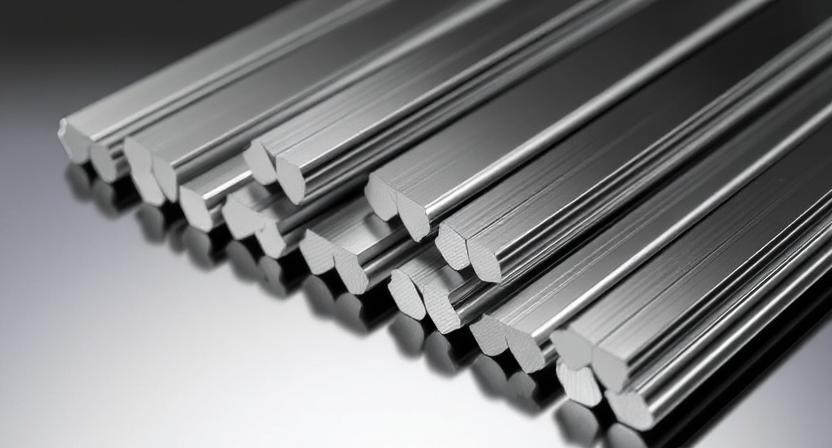Stainless Steel 317L Properties
Stainless Steel 317L, or SS 317L, is a low-carbon, high-alloy austenitic stainless steel primarily used in environments requiring exceptional resistance to corrosion. With its superior molybdenum (3-4%) content compared to other stainless steel grades, SS 317L offers greater resistance to pitting, crevice corrosion, and general corrosion. This grade is commonly used in the chemical, pharmaceutical, and food processing industries, where the material must endure exposure to corrosive substances, acidic environments, and high-pressure conditions. One of the key features of SS 317L is its low carbon content, which minimizes the risk of carbide precipitation and ensures better weldability and formability. It is commonly used in environments such as acidic solutions, high chloride environments, and applications that require resistant materials for machinery exposed to severe chemicals and high temperatures.
Ferrobend is a well-known company specializing in the manufacturing and supply of stainless steel products, including Stainless Steel 310 and 317L. The manufacturing process at Ferrobend involves several advanced techniques and stringent quality control measures to ensure that the final products meet the highest industry standards.
To remove any oxide scale and contaminants from the surface, the stainless steel undergoes pickling, a chemical treatment process that typically uses an acidic solution. This step is followed by passivation, which forms a thin, protective layer of chromium oxide on the surface of the stainless steel. The passivation layer is crucial for enhancing the corrosion resistance of both SS 310 and SS 317L, ensuring that the material can withstand exposure to harsh chemicals and high-temperature environments.
After passing all tests, the stainless steel products are cut, shaped, or finished to the specific needs of the client. Whether it’s custom dimensions, specific finishes, or additional fabrication processes, Ferrobend offers a variety of value-added services. Finally, the products are carefully packaged to prevent any damage during transport and ensure they reach customers in pristine condition.
Ferrobend’s manufacturing of Stainless Steel 310 and 317L represents a commitment to producing high-quality stainless steel products that meet the stringent demands of industries worldwide. Through advanced manufacturing techniques, a focus on quality control, and a dedication to customer satisfaction, Ferrobend ensures that its stainless steel products provide superior performance, durability, and resistance to corrosion in even the most extreme conditions.
Chemical Properties:
| Elements | Cr | Ni | C | Si | Mn | P | S | Mo | Fe |
|---|---|---|---|---|---|---|---|---|---|
| % | min: 17.0 ,max:19.0 | min: 8.0 ,max: 10.0 | 0.15 max | 1.00 max | 2.0 max | 0.20 max | 0.15 min | 0.75 | balance |
Mechanical Properties:
| Tensile Strength ksi (min.) | Yield Strength 0.2% Offset ksi (min.) | Elongation - % in 50 mm (min.) | Hardness (Brinell) MAX | Hardness (Rockwell B) MAX |
|---|---|---|---|---|
| 75 | 30 | 35 | 228 | - |
Physical Properties:
| Denstiy lbm/in3 | Coefficient of Thermal Expansion (min/in)-°F | Electrical Resistivity mW-in | Thermal Conductivity BTU/hr-ft-°F | Melting Range | |||||||
|---|---|---|---|---|---|---|---|---|---|---|---|
| at 68 °F | at 68 – 212°F | at 68 – 932°F | at 68 – 1450°F | at 68°F | at 212°F | at 392°F | at 752°F | at 1112°F | at 1472°F | at 68 – 212°F | - |
| 0.29 | 9.2 | 10.4 | 10.9 | 28.3 | 30.7 | 33.8 | 39.4 | 43.7 | 47.6 | 113.2 | 2552°F |
Equivalent Grades and Designations:
| SAE / AISI | 317L |
| UNS | S317L00 |
| EN Material Number | 1.4305 |
| EN Material Name | X8CrNiS18-9 |
| DIN Material Name | X8CrNiS18-9 |
| JIS | SUS 317L |
| BS | 317LS 21 En58M |
Heat Resistance:
- Good oxidation resistance at temperatures up to 1700oF (927 oC)
- Continuous use at temperatures above 1400oF (760oC) is not usually recommended due to carbide precipitation which can lead to irregular scaling
- Does not have a low carbon content so it is also vulnerable to sensitization
Welding Characteristics:
- Not generally recommended, but may be welded with some difficulty
- May be welded with Alloy 310 electrodes
- Should be annealed after welding to re-dissolve precipitated carbides
Machinability:
- High machining rates can be obtained in the annealed condition with hardness in the range of 200 to 240 Brinell
- Will work harden; therefore, it should be machined at reduced surface feet per minute and heavier feeds to prevent glazing at the tool interface.
Applications:
- Nuts and bolts
- Aircraft fittings
- Gears
- Screws
- Shafts
- Electrical switchgear components
- Bushings
